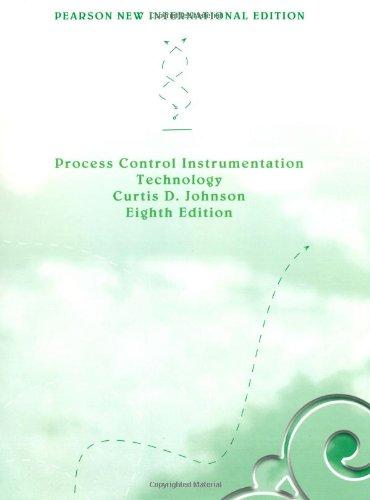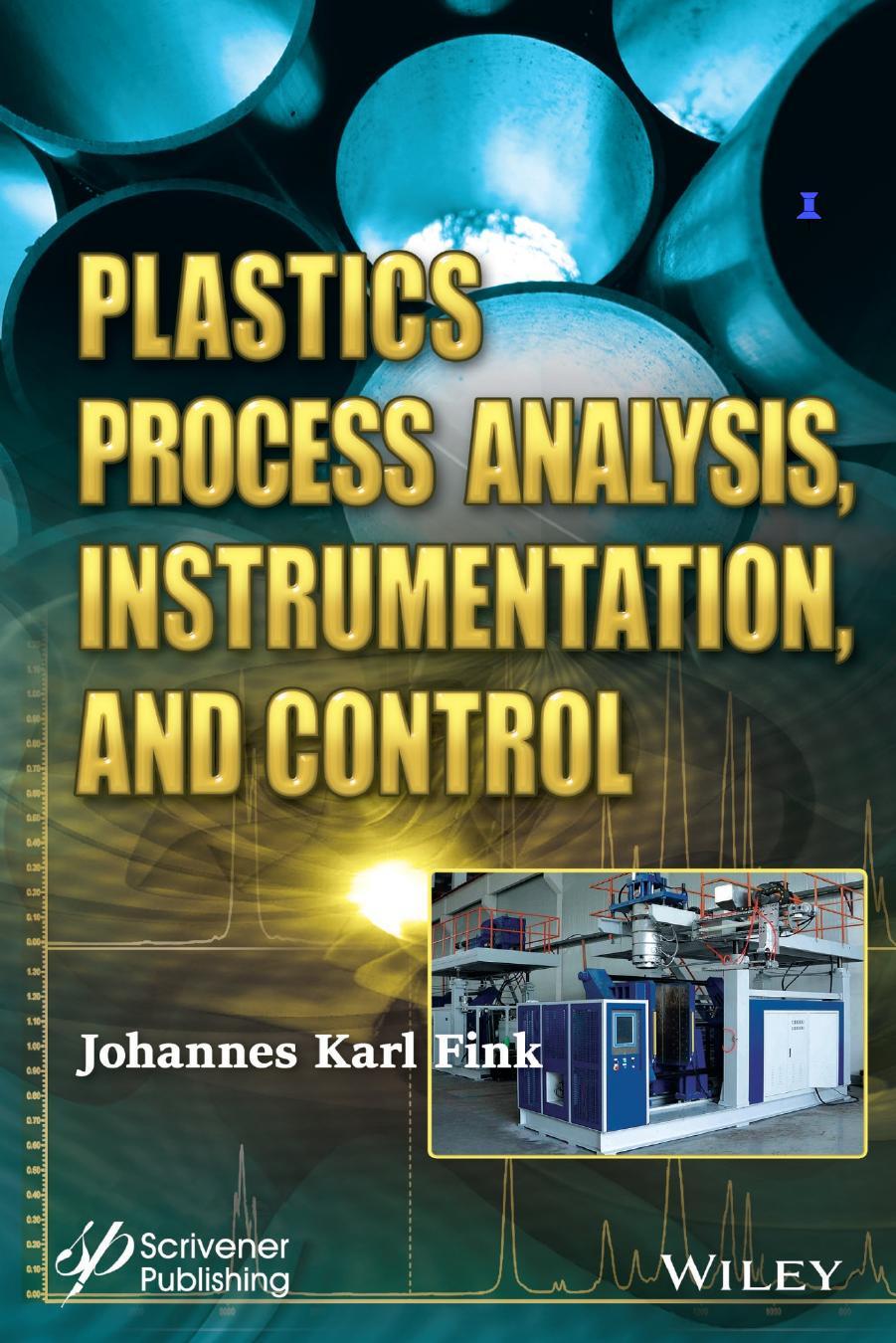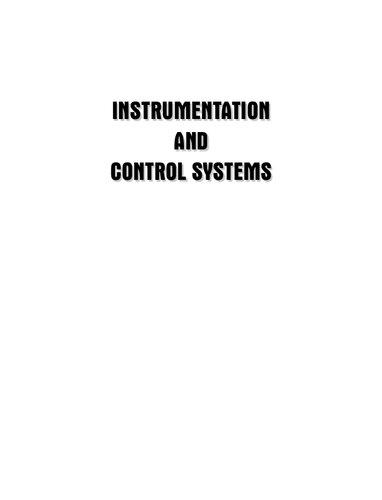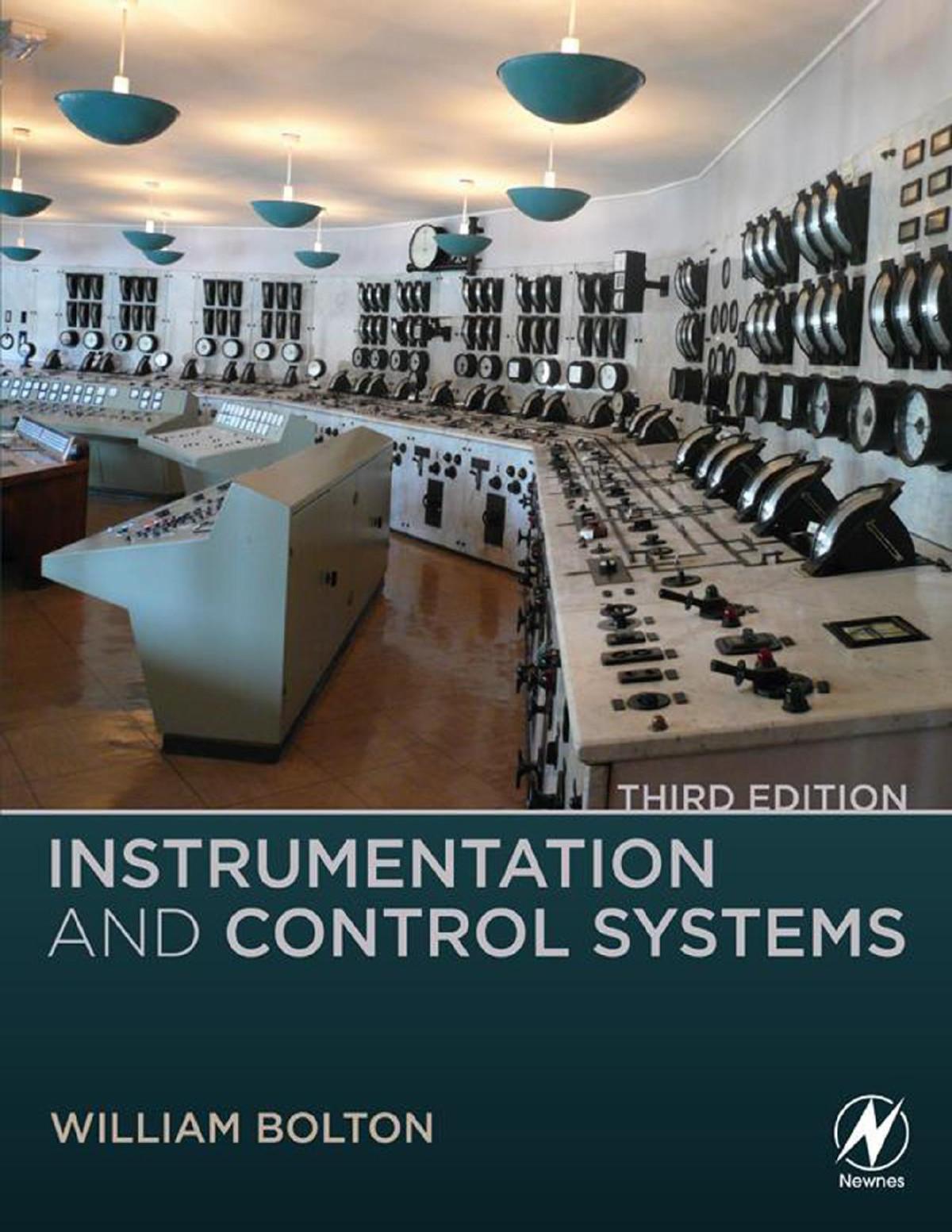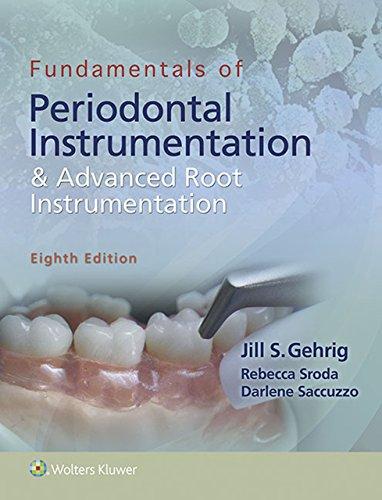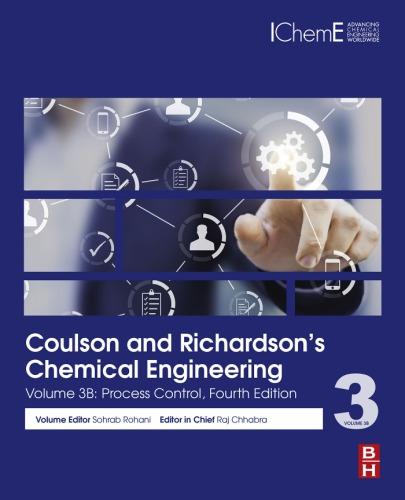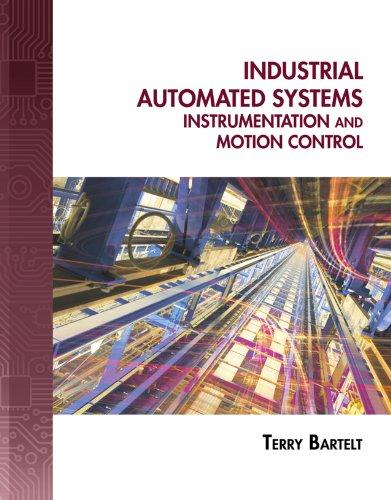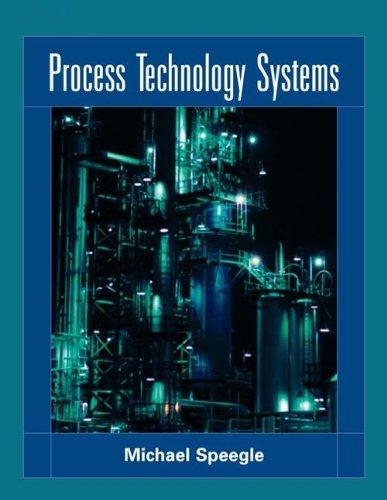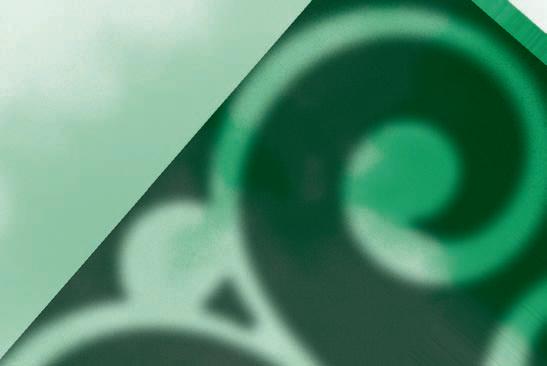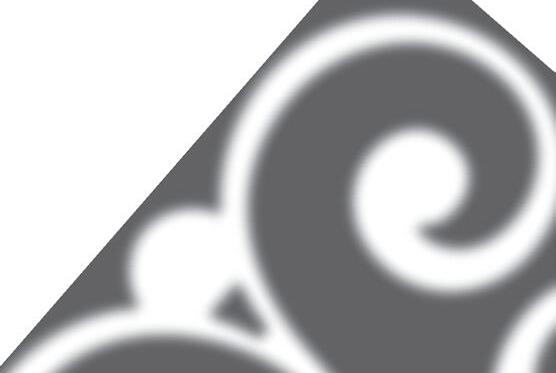Introduction to Process Control
INSTRUCTIONAL OBJECTIVES
This chapter presents an introduction to process-control concepts and the elements of a process-control system. After you read this chapter and work through the example problems and chapter problems you will be able to:
■ Draw a block diagram of a simple process-control loop and identify each element.
■ List three typical controlled variables and one controlling variable.
■ Describe three criteria to evaluate the performance of a process-control loop.
■ Explain the difference between analog and digital control systems.
■ Define supervisory control.
■ Explain the concept behind process-control networks.
■ Define accuracy, hysteresis, and sensitivity.
■ List the SI units for length, time, mass, and electric current.
■ Recognize the common P&ID symbols.
■ Draw a typical first-order time response curve.
■ Determine the average and standard deviation of a set of data samples.
1 INTRODUCTION
Human progress from a primitive state to our present complex, technological world has been marked by learning new and improved methods to control the environment. Simply stated, the term control means methods to force parameters in the environment to have specific values. This can be as simple as making the temperature in a room stay at or as complex as manufacturing an integrated circuit or guiding a spacecraft to Jupiter. In general, all the elements necessary to accomplish the control objective are described by the term control system. The purpose of this book is to examine the elements and methods of control system operation used in industry to control industrial processes (hence the term process control ). This 21°C
From Chapte5 r 5 1 of
Instrumentation Technology, Eighth Edition. Curtis D. Johnson. Copyright © 2006 Pearson Prentice Hall. All rights reserved. by Pearson Education, Inc. Published by Process Control
INTRODUCTION TO PROCESS CONTROL
chapter will present an overall view of process-control technology and its elements, including important definitions.
2 CONTROL SYSTEMS
The basic strategy by which a control system operates is logical and natural. In fact, the same strategy is employed in living organisms to maintain temperature, fluid flow rate, and a host of other biological functions. This is natural process control.
The technology of artificial control was first developed using a human as an integral part of the control action. When we learned how to use machines, electronics, and computers to replace the human function, the term automatic control came into use.
2.1
Process-Control Principles
In process control, the basic objective is to regulate the value of some quantity. To regulate means to maintain that quantity at some desired value regardless of external influences. The desired value is called the reference value or setpoint.
In this section, a specific system will be used to introduce terms and concepts employed to describe process control.
The Process Figure 1 shows the process to be used for this discussion. Liquid is flowing into a tank at some rate, , and out of the tank at some rate, . The liquid in the tank has some height or level, h. It is known that the output flow rate varies as the square root of the height, , so the higher the level, the faster the liquid flows out. If the output flow rate is not exactly equal to the input flow rate, the level will drop, if , or rise, if . Qout 6 Qin Qout 7 Qin
out = K 2h
FIGURE 1
The objective is to regulate the level of liquid in the tank, h, to the value H.
INTRODUCTION TO PROCESS CONTROL
Thisprocesshasapropertycalled self-regulation. Thismeansthatforsomeinputflow rate,theliquidheightwillriseuntilitreachesaheightforwhichtheoutputflowratematches theinputflowrate.Aself-regulatingsystemdoesnotprovideregulationofavariabletoany particularreferencevalue.Inthisexample,theliquidlevelwilladoptsomevalueforwhich inputandoutputflowratesarethesame,andthereitwillstay.Butiftheinputflowrate changed,thenthelevelwouldchangealso,soitisnotregulatedtoareferencevalue.
The tank in Figure 1 has a relationship between flow and level given by where h is in feet and . Suppose the input flow rate is 2 gal/min. At what value of h will the level stabilize from self-regulation?
Solution
The level will stabilize from self-regulation when . Thus, we solve for h,
Suppose we want to maintain the level at some particular value, H, in Figure 1, regardless of the input flow rate. Then something more than self-regulation is needed.
Human-Aided Control Figure 2 shows a modification of the tank system to allow artificial regulation of the level by a human. To regulate the level so that it maintains the value H, it will be necessary to employ a sensor to measure the level. This has been provided via a “sight tube,” S, as shown in Figure 2. The actual liquid level or height is called the controlled variable. In addition, a valve has been added so that the output flow rate can be changed by the human. The output flow rate is called themanipulated variableor controlling variable
FIGURE 2
A human can regulate the level using a sight tube, S, to compare the level, h, to the objective, H, and adjust a valve to change the level.
INTRODUCTION TO PROCESS CONTROL
FIGURE 3
An automatic level-control system replaces the human with a controller and uses a sensor to measure the level.
Now the height can be regulated apart from the input flow rate using the following strategy: The human measures the height in the sight tube and compares the value to the setpoint. If the measured value is larger, the human opens the valve a little to let the flow out increase, and thus the level lowers toward the setpoint. If the measured value is smaller than the setpoint, the human closes the valve a little to decrease the flow out and allow the level to rise toward the setpoint.
By a succession of incremental opening and closing of the valve, the human can bring the level to the setpoint value, H, and maintain it there by continuous monitoring of the sight tube and adjustment of the valve. The height is regulated.
Automatic Control To provide automatic control, the system is modified as shown in Figure 3 so that machines, electronics, or computers replace the operations of the human. An instrument called a sensor is added that is able to measure the value of the level and convert it into a proportional signal, s. This signal is provided as input to a machine, electronic circuit, or computer called the controller. The controller performs the function of the human in evaluating the measurement and providing an output signal, u, to change the valve setting via an actuator connected to the valve by a mechanical linkage.
When automatic control is applied to systems like the one in Figure 3, which are designed to regulate the value of some variable to a setpoint, it is called process control.
2.2 Servomechanisms
Another commonly used type of control system, which has a slightly different objective from process control, is called a servomechanism. In this case, the objective is to force some parameter to vary in a specific manner. This may be called a tracking control system. In-
INTRODUCTION TO PROCESS CONTROL
FIGURE 4
Servomechanism-type control systems are used to move a robot arm from point A to point B in a controlled fashion.
stead of regulating a variable value to a setpoint, the servomechanism forces the controlled variable value to follow variation of the reference value.
For example, in an industrial robot arm like the one shown in Figure 4, servomechanisms force the robot arm to follow a path from point A to point B. This is done by controlling the speed of motors driving the arm and the angles of the arm parts.
The strategy for servomechanisms is similar to that for process-control systems, but the dynamic differences between regulation and tracking result in differences in design and operation of the control system. This book is directed toward process-control technology.
2.3 Discrete-State Control Systems
This is a type of control system concerned with controlling a sequence of events rather than regulation or variation of individual variables. For example, the manufacture of paint might involve the regulation of many variables, such as mixing temperature, flow rate of liquids into mixing tanks, speed of mixing, and so on. Each of these might be expected to be regulated by process-control loops. But there is also a sequence of events that must occur in the overall process of manufacturing the paint. This sequence is described in terms of events that are timed to be started and stopped on a specified schedule. Referring to the paint example, the mixture needs to be heated with a regulated temperature for a certain length of time and then perhaps pumped into a different tank and stirred for another period.
The starting and stopping of events is a discrete-based system because the event is either true or false, (i.e., started or stopped, open or closed, on or off). This type of control system can also be made automatic and is perfectly suited to computer-based controllers.
INTRODUCTION TO PROCESS CONTROL
These discrete-state control systems are often implemented using specialized computerbased equipment called programmable logic controllers (PLCs).
3
PROCESS-CONTROL BLOCK DIAGRAM
To provide a practical, working description of process control, it is useful to describe the elements and operations involved in more generic terms. Such a description should be independent of a particular application (such as the example presented in the previous section) and thus be applicable to all control situations. Amodel may be constructed using blocks to represent each distinctive element. The characteristics of control operation then may be developed from a consideration of the properties and interfacing of these elements. Numerous models have been employed in the history of process-control description; we will use one that seems most appropriate for a description of modern and developing technology of process control.
3.1 Identification of Elements
The elements of a process-control system are defined in terms of separate functional parts of the system. The following paragraphs define the basic elements of a process-control system and relate them to the example presented in Section 2.
Process In the previous example, the flow of liquid in and out of the tank, the tank itself, and the liquid all constitute a process to be placed under control with respect to the fluid level. In general, a process can consist of a complex assembly of phenomena that relate to some manufacturing sequence. Many variables may be involved in such a process, and it may be desirable to control all these variables at the same time. There are singlevariable processes, in which only one variable is to be controlled, as well as multivariable processes, in which many variables, perhaps interrelated, may require regulation. The process is often also called the plant.
Measurement Clearly, to effect control of a variable in a process, we must have information about the variable itself. Such information is found by measuring the variable. In general, a measurement refers to the conversion of the variable into some corresponding analog of the variable, such as a pneumatic pressure, an electrical voltage or current, or a digitally encoded signal. Asensor is a device that performs the initial measurement and energy conversion of a variable into analogous digital, electrical, or pneumatic information. Further transformation or signal conditioning may be required to complete the measurement function. The result of the measurement is a representation of the variable value in some form required by the other elements in the process-control operation. In the system shown in Figure 3, the controlled variable is the level of liquid in the tank. The measurement is performed by some sensor, which provides a signal, s, to the controller. In the case of Figure 2, the sensor is the sight tube showing the level to the human operator as an actual level in the tank.
INTRODUCTION TO PROCESS CONTROL
The sensor is also called a transducer. However, the word sensor is preferred for the initial measurement device because “transducer” represents a device that converts any signal from one form to another. Thus, for example, a device that converts a voltage into a proportional current would be a transducer. In other words, all sensors are transducers, but not all transducers are sensors.
Error Detector In Figure 2, the human looked at the difference between the actual level, h, and the setpoint level, H, and deduced an error. This error has both a magnitude and polarity. For the automatic control system in Figure 3, this same kind of error determination must be made before any control action can be taken by the controller. Although the error detector is often a physical part of the controller device, it is important to keep a clear distinction between the two.
Controller The next step in the process-control sequence is to examine the error and determinewhataction,ifany,shouldbetaken.Thispartofthecontrolsystemhasmany names,suchas compensator or filter, but controller is the most common. The evaluation may beperformedbyanoperator(asinthepreviousexample),byelectronicsignalprocessing,by pneumaticsignalprocessing,orbyacomputer.Inmoderncontrolsystems,theoperationsof thecontrolleraretypicallyperformedbymicroprocessor-basedcomputers.Thecontrollerrequiresaninputofbotha measured indication of the controlled variable and a representation ofthe reference value of the variable, expressed in the same terms as the measured value. The referencevalueofthevariable,youwillrecall,isreferredtoasthesetpoint.Evaluationconsistsofdeterminingtheactionrequiredtodrivethecontrolledvariabletothesetpointvalue.
Control Element The final element in the process-control operation is the device that exerts a direct influence on the process; that is, it provides those required changes in the controlled variable to bring it to the setpoint. This element accepts an input from the controller, which is then transformed into some proportional operation performed on the process. In our previous example, the control element is the valve that adjusts the outflow of fluid from the tank. This element is also referred to as the final control element.
Often an intermediate operation is required between the controller output and the final control element. This operation is referred to as an actuator because it uses the controller signal to actuate the final control element. The actuator translates the small energy signal of the controller into a larger energy action on the process.
3.2 Block Diagram
Figure 5 shows a general block diagram constructed from the elements defined previously. The controlled variable in the process is denoted by c in this diagram, and the measured representation of the controlled variable is labeled b. The controlled variable setpoint is labeled r, for reference. The controller uses the error input to determine an appropriate output signal, p, which is provided as input to the control element. The control element operates on the process by changing the value of the controlling process variable, u.
The error detector is a subtracting-summing point that outputs an error signal, , to the controller for comparison and action. e = r - b
INTRODUCTION TO PROCESS CONTROL
FIGURE 5
This block diagram of a control loop defines all the basic elements and signals involved.
Figure 6 shows how a physical control system is represented as a block diagram. The physical system for control of flow through a pipe is shown in Figure 6. Variation of flow through an obstruction (the orifice plate) produces a pressure-difference variation across the obstruction. This variation is converted to the standard signal range of 3 to 15 psi. The P/I converter changes the pressure to a 4- to 20-mA electric current, which is sent to the controller. The controller outputs a 4- to 20-mA control signal to signify the correct valve setting to provide the correct flow. This current is converted to a 3- to 15-psi pressure signal by the I/P converter and applied to a pneumatic actuator. The actuator then adjusts the valve setting.
Figure 6 shows how all the control system operations are condensed to the standard block diagram operations of measurement, error detection, controller, and final control element.
The purpose of a block diagram approach is to allow the process-control system to be analyzed as the interaction of smaller and simpler subsystems. If the characteristics of each element of the system can be determined, then the characteristics of the assembled system can be established by an analytical marriage of these subsystems. The historical development of the system approach in technology was dictated by this practical aspect: first, to specify the characteristics desired of a total system, and then, to delegate the development of subsystems that provide the overall criteria.
It becomes evident that the specification of a process-control system to regulate a variable, c, within specified limits and with specified time responses, determines the characteristics the measurement system must possess. This same set of system specifications is reflected in the design of the controller and control element.
From this concept, we conclude that the analysis of a process-control system requires an understanding of the overall system behavior and the reflection of this behavior in the properties of the system elements. Most people find that an understanding of
INTRODUCTION TO PROCESS CONTROL
FIGURE 6
The physical diagram of a control loop and its corresponding block diagram look similar. Note the use of current- and pressure-transmission signals.
thepartsleadstoabetterunderstandingofthewhole.Wewillproceedwiththisassumptionasaguidingconcept.
The Loop Notice in Figure 5 that the signal flow forms a complete circuit from process through measurement, error detector, controller, and final control element. This is called a loop, and in general we speak of a process-control loop. In most cases, it is called a feedback loop, because we determine an error and feed back a correction to the process.
INTRODUCTION TO PROCESS CONTROL
4
CONTROL SYSTEM EVALUATION
Aprocess-control system is used to regulate the value of some process variable. When such a system is in use, it is natural to ask, How well is it working? This is not an easy question to answer, because it is possible to adjust a control system to provide different kinds of response to errors. This section discusses some methods for evaluating how well the system is working.
The variable used to measure the performance of the control system is the error, e(t), which is the difference between the constant setpoint or reference value, r, and the controlled variable, c(t). (1)
e(t) = r - c(t)
Since the value of the controlled variable may vary in time, so may the error. (Note that in a servomechanism, the value of r may be forced to vary in time also.)
Control System Objective In principle, the objective of a control system is to make the error in Equation (1) exactly zero, but the control system responds only to errors (i.e., when an error occurs, the control system takes action to drive it to zero). Conversely, if the error were zero and stayed zero, the control system would not be doing anything and would not be needed in the first place. Therefore, this objective can never be perfectly achieved, and there will always be some error. The question of evaluation becomes one of how large the error is and how it varies in time.
A practical statement of control system objective is best represented by three requirements:
1. The system should be stable.
2. The system should provide the best possible steady-state regulation.
3. The system should provide the best possible transient regulation.
4.1 Stability
The purpose of the control system is to regulate the value of some variable. This requires that action be taken on the process itself in response to a measurement of the variable. If this is not done correctly, the control system can cause the process to become unstable. In fact, the more tightly we try to control the variable, the greater the possibility of instability.
Figure 7 shows that, prior to turning on a control system, the controlled variable drifts in a random fashion and is not regulated. After the control system is turned on, the variable is forced to adopt the setpoint value, and all is well for awhile. Notice that some time later, however, the variable begins to exhibit growing oscillations of value—that is, an instability. This occurs even though the control system is still connected and operational; in fact, it occurs because the system is connected and operational.
The first objective, then, simply means that the control system must be designed and adjusted so that the system is stable. Typically, as the control system is adjusted to give better control, the likelihood of instability also increases.
INTRODUCTION TO PROCESS CONTROL
FIGURE 7
A control system can actually cause a system to become unstable.
4.2 Steady-State Regulation
Theobjectiveofthebestpossiblesteady-stateregulationsimplymeansthatthesteadystateerrorshouldbeaminimum.Generally,whenacontrolsystemisspecified,there willbesomeallowabledeviation, , aboutthesetpoint.Thismeansthatvariationsof thevariablewithinthisbandareexpectedandacceptable.Externalinfluencesthattend tocausedriftsofthevaluebeyondtheallowabledeviationarecorrectedbythecontrol system.
For example, a process-control technologist might be asked to design and implement a control system to regulate temperature at within . This means the setpoint is to be , but the temperature may be allowed to vary within the range of to .
4.3 Transient Regulation
What happens to the value of the controlled variable when some sudden transient event occurs that would otherwise cause a large variation? For example, the setpoint could change. Suppose the setpoint in the aforementioned temperature case were suddenly changed to . Transient regulation specifies how the control system reacts to bring the temperature to this new setpoint.
Another type of transient influence is a sudden change of some other process variable. The controlled variable depends on other process variables. If one of them suddenly changes value, the controlled variable may be driven to change also, so the control system acts to minimize the effect. This is called transient response.
4.4 Evaluation Criteria
The question of how well the control system is working is thus answered by (1) ensuring stability, (2) evaluating steady-state response, and (3) evaluating the response to setpoint changes and transient effects. There are many criteria for gauging the response. In general, the term tuning is used to indicate how a process-control loop is adjusted to provide the best control.
INTRODUCTION TO PROCESS CONTROL
FIGURE 8
One of the measures of control system performance is how the system responds to changes of setpoint or a transient disturbance.
Damped Response
One type of criterion requires that the controlled variable ex hibit a response such as that shown in Figure 8 for excitations of both setpoint changes and transient effects. Note that the error is of only one polarity (i.e., it never oscillates about the setpoint). For this case, measures of quality are the duration, , of the excursion and, for the transient, the maximum error, , for a given input. The duration is usually defined as the time taken for the controlled variable to go from 10% of the change to 90% of the change following a setpoint change. In the case of a transient, the duration is often defined as the time from the start of the disturbance until the controlled variable is again within 4% of the reference. Different tuning will provide different values of and for the same excitation. It is up to the process designers to decide whether the best control is larger duration with smaller peak error, or vice versa, or something in between.
Cyclic Response
Another type of criterion applies to those cases in which the response to a setpoint change or transient is as shown in Figure 9. Note that the controlled variable oscillates about the setpoint. In this case, the parameters of interest are the maximum error,
FIGURE 9
INTRODUCTION TO PROCESS CONTROL
In cyclic or underdamped response, the variable will exhibit oscillations about the reference value.
,andtheduration, ,alsocalledthesettlingtime.Thedurationismeasuredfromthetime whentheallowableerrorisfirstexceededtothetimewhenitfallswithintheallowableerror andstays.
The nature of the response is modified by adjusting the control loop parameters, which is called tuning. There may be large maximum error but short duration or long duration with small maximum error, and everything in between.
Anumber of standard cyclic tuning criteria are used. Two common types are minimumareaandquarteramplitude.In minimum area, the tuning is adjusted until the net area under the error-time curve is a minimum, for the same degree of excitation (setpoint change or transient). Figure 10 shows the area as a shaded part of the curve. Analytically, this is given by (2)
=μ e(t) dt = minimum
The quarter-amplitude criterion, shown in Figure 10, specifies that the ampli tude of each peak of the cyclic response be a quarter of the preceding peak. Thus, , and so on. a 2 = a 1 4, a 3 = a 2 4
INTRODUCTION TO PROCESS CONTROL
FIGURE 10
Two criteria for judging the quality of controlsystem response are the minimum area and quarter amplitude.
5 ANALOG AND DIGITAL PROCESSING
In the past, the functions of the controller in a control system were performed by sophisticated electronic circuits. Data were represented by the magnitude of voltages and currents in such systems. This is referred to as analog processing. Most modern control systems now employ digital computers to perform controller operations. In computers, data are represented as binary numbers consisting of a specific number of bits. This is referred to as digital processing. The paragraphs that follow contrast the analog and digital approaches to control system operation.
5.1 Data Representation
The representation of data refers to how the magnitude of some physical variable is represented in the control loop. For example, if a sensor outputs a voltage whose magnitude varies with temperature, then the voltage represents the temperature. Analog and digital systems represent data in very different fashions.
Analog Data An analog representation of data means that there is a smooth and continuous variation between a representation of a variable value and the value itself. Figure11shows an analog relationship between some variable, c, and its representation, b. Notice that, for every value of c within the range covered, there is a unique value of b. If c changes by some small amount, , then b will change by a proportional amount, . The relationship in Figure 11ais called nonlinear because the same does not result in the same , as shown. This is described in more detail later in this chapter. b c b c
INTRODUCTION TO PROCESS CONTROL
FIGURE 11
Graph (a) shows how output variable b changes as an analog of variable c. Graph (b) shows how a digital output variable, n, would change with variable c.
Digital Data Digital data means that numbers are represented in terms of binary digits, also called bits, which take on values of one (1) or zero (0). When data are represented digitally, some range of analog numbers is encoded by a fixed number of binary digits. The consequence is a loss of information because a fixed number of binary digits has a limited resolution. For example, Table 1 shows how voltage from 0 to 15 volts could be encoded by four binary digits. Achange of one volt produces a change of the least significant bit (LSB). You can see that, if the voltage changed by less than one volt, the digital representation would not change. So the representation cannot distinguish between 4.25 Vand 4.75 Vbecause both would be represented by .
Table 1 also shows the hexadecimal (hex) representation of binary numbers in the digital representation. Often we use the hex representation when presenting digital data because it is a more compact and human-friendly way of writing numbers.
The consequence of digital representation of data is that the smooth and continuous relation between the representation and the variable data value is lost. Instead, the digital representation can take on only discrete values. This can be seen in Figure 11, where a variable, c, is represented by a digital quantity, n. Notice that variations of c, such as , may not result in any change in n. The variable must change by more than some minimum amount, depending on where in the curve the change occurs, before a change in representation is assured.
Data Conversions Special devices are employed to convert analog voltages into a digital representation. These are called analog-to-digital converters (ADCs). In a control system, the sensor often produces an analog output such as a voltage. Then an ADC is used
TABLE 1 Decimal-binary-hex encoding
FIGURE 12
An ADC converts analog data, such as voltage, into a digital representation, in this case 4 bits.
to convert that voltage into a digital representation for input to the computer. Figure 12 shows how an ADC might be used to convert voltage into a 4-bit digital signal as illustrated in Table 1.
Digital-to-analog converters (DACs) convert a digital signal into an analog voltage. These devices are used to convert the control output of the computer into a form suitable for the final control element.
5.2 ON/OFF Control
One of the most elementary types of digital processing has been in use for many years, long before the advent of computers, in fact. This is called ON/OFF control because the final control element has only two states, on and off. Thus, the controller output need have only these two states as well. It can be said that the controller output is a digital representation of a single binary digit, 0 or 1.
Figure 13 shows a diagram of an elementary ON/OFF control system whose objective is to maintain the temperature in a system at some reference value, . Asensor Tref
INTRODUCTION TO PROCESS CONTROL
FIGURE 13
This ON/OFF control system can either heat or cool or do neither. No variation of the degree of heating or cooling is possible.
converts temperature values into a resistance in an analog fashion; that is, R varies smoothly and continuously with T. Signal conditioning converts the variable R into an analog voltage, V. Thus, V is an analog of T as well. The differential amplifier multiplies the difference between V and a reference voltage, , by a gain K to produce an error voltage, .
issimplydefinedasthevoltagefromtheconverterthatwouldbeproducedby . Atthispoint,thesystembecomesdigital,becausetherelayswilleitherbeopen orclosedsothattheheaterorcoolerwilleitherbeonoroff.Thediodesdirectthecurrenttotheappropriaterelaytoproduceheatingorcooling,basedonpolarity.Thissystemalsoexhibitsadeadbandandahysteresis,sincethereisadifferencebetweenarelay “pull-in”voltageandthe“release”voltage.A deadband is a range, of temperature in thiscase,whereinnoactionwilloccur. Hysteresis means that the behavior of the systemisdifferentatthesamevalueoftemperature,dependingonwhetherthetemperature is increasing or decreasing.
Our home and auto heaters and air conditioners, home water heaters, and a host of other basic control systems work according to the same ON/OFF mode.
INTRODUCTION TO
FIGURE 14
An analog control system such as this allows continuous variation of some parameter, such as heat input, as a function of error.
5.3 Analog Control
True analog control exists when all variables in the system are analog representations of another variable. Figure 14 shows a process in which a heater is used to control temperature in an oven. In this case, however, the heater output, Q, is an analog of the excitation voltage, , and thus heat can be varied continuously. Notice that every signal is an analog: is an analog of T; the error E is an analog of the difference between the reference, , and the temperature voltage, . The reference voltage is simply the voltage that would result from measurement of the specified reference temperature, .
5.4 Digital Control
True digital control involves the use of a computer in modern applications, although in the past, digital logic circuits were also used. There are two approaches to using computers for control.
Supervisory Control When computers were first considered for applications in control systems, they did not have a good reliability; they suffered frequent failures and breakdown. The necessity for continuous operation of control systems precluded the use of computers to perform the actual control operations. Supervisory control emerged as an intermediate step wherein the computer was used to monitor the operation of analog control loops and to determine appropriate setpoints. A single computer could monitor many control loops and use appropriate software to optimize the setpoints for the best overall plant operation. If the computer failed, the analog loops kept the process running using the last setpoints until the computer came back on-line.
Figure 15 shows how a supervisory computer would be connected to the analog heater control system of Figure 14. Notice how the ADC and DAC provide interface between the analog signals and the computer.
INTRODUCTION TO PROCESS CONTROL
FIGURE 15
In supervisory control, the computer monitors measurements and updates setpoints, but the loops are still analog in nature.
Direct Digital Control (DDC) As computers have become more reliable and miniaturized, they have taken over the controller function. Thus, the analog processing loop is discarded. Figure 16 shows how, in a full computer control system, the operations of the controller have been replaced by software in the computer. The ADC and DAC provide interface with the process measurement and control action. The computer inputs a digital representation of the temperature, , as an analog-to-digital conversion of the voltage, . Error detection and controller action are determined by software. The computer then provides output directly to the heater via digital representation, , which is converted to the excitation voltage, , by the DAC.
Smart Sensor Along with the dramatic advances in computer technology has come an equally dramatic advance in the applications of computers to control systems. One of the most remarkable developments has been the integration of a microprocessor-based controller computer directly into the sensor assembly. Using modern integrated circuit technology, the sensor, signal conditioning, ADC, and computer controller are all contained within the sensor housing. In one form, the unit also contains a DAC with a 4- to 20-mA output to be fed to the final control element. The setpoint is programmed by connecting another computer to the unit using a serial interface line.
The most current technology, however, is to interface these smart sensors to a local area network, or field bus, to be described next, which allows the sensor to be connected to other computers and to the final control element over a common digital serial line.
INTRODUCTION TO PROCESS CONTROL
FIGURE 16
This direct digital control system lets the computer perform the error detection and controller functions.
Networked Control Systems When a plant uses DDC, it becomes possible to place the computer-based controller directly at the site of the plant where the control is needed. This is done by using smart sensors or by placing the computer controller in hermetically sealed instrument cases around the plant. In order to have coordinated control of the whole plant, all these DDC units are placed on a local area network (LAN). The LAN commonly provides communication as a serial stream of digital data over a variety of carriers such as wires and fiber optics. The LAN also connects to computers exercising master control of plant operations, fiscal computers for accounting and production control, and engineering computers for monitoring and modifying plant operations as needed. In control systems, these LANs are referred to as a field bus.
Figure 17 shows how the LAN or field bus connects the computers in a plant together. Each of the process-control computers operates one or more DDC loops like the one shown in Figure 16. Bus users can monitor the operations of any of the plant process-control loops, and those with authorization can modify control characteristics such as setpoints and gains.
ManagementEngineeringFinancial
FIGURE 17
Local area networks (LANs) play an important role in modern process-control plants.
INTRODUCTION TO PROCESS CONTROL
Specialprocess-controlbusstandardshavebeendevelopedforhowdataandinformationarerepresentedandtransmittedinthesenetworks.Thetwomostcommonlyimplemented standardsaretheFoundationFieldbusandtheProfibus(ProcessFieldBus).Theideabehind thesestandardsistohaveuniversalagreementamongprocessequipmentmanufacturerson howdataarerepresentedonthebuslineandhowdataaretransmittedandreceived.Thisis anextensionofthe“plugandplay”conceptusedforcomputerhardware.Withstandardization,successfulinterconnectionandinterfacingofequipmentfromavarietyofmanufacturersintoacontrolloopisassured.Fieldbus(primarilyintheUnitedStates)andProfibus (primarilyinEurope)arevyingtobecometheuniversalstandard.
5.5 Programmable Logic Controllers
Many manufacturing operations are ON/OFF in nature; that is, a conveyor or heater is either on or off, a valve is either open or closed, and so on. In the past, these types of discrete control functions were often provided by a system of electrical relays wired according to a complex diagram into what was called a relay logic controller.
In recent years, computers have also taken over the operation of such relay logic controllers, known as programmable logic controllers (PLCs). Even though originally designed to control discrete-state (ON/OFF) systems, they are now also used to implement DDC.
Figure 18 shows how the problem of Figure 13 would be implemented using a PLC. Note that thermal-limit switches are used instead of a sensor to indicate when the
FIGURE 18
A programmable logic controller (PLC) is an outgrowth of ON/OFF-type control environments. In this case the heater and cooler are either ON or OFF.
INTRODUCTION TO PROCESS CONTROL
temperature has risen above or fallen below the limit temperatures. These are simply switches designed to open (or close) when the temperature reaches certain preset limits.
6
UNITS, STANDARDS, AND DEFINITIONS
Asinanyothertechnologicaldiscipline,thefieldofprocesscontrolhasmanysetsofunits, standards,anddefinitionstodescribeitscharacteristics.Someofthesearearesultofhistoricaluse,someareforconvenience,andsomearejustconfusing.Asthedisciplinegrew, therewereeffortstostandardizetermssothatprofessionalworkersinprocesscontrolcould effectivelycommunicateamongthemselvesandwithspecialistsinotherdisciplines.Inthis section,wesummarizethepresentstateofaffairsrelativetothecommonunits,standards, anddefinitions.
6.1 Units
Toensure precise technical communication among individuals employed in technological disciplines,itisessentialtouseawell-definedsetofunitsofmeasurement.Themetricsystemofunitsprovidessuchcommunicationandhasbeenadoptedbymosttechnicaldisciplines.Inprocesscontrol,aparticularsetofmetricunitsisused(whichwasdevelopedby aninternationalconference)calledtheInternationalSystem(SI,SystèmeInternational D’Unités).
In the United States, the English system of units is still in common use, although use of SI units is gradually occurring more often. It is important for the process-control specialist to know English units and to be able to perform conversions with the SI system.
International System of Units The international system of units is maintained by an international agreement for worldwide standardization. The system is based on seven well-defined base units and two supplementary, dimensionless units. Everything else falls into the category of defined units, which are defined in terms of the seven base and two supplementary units.
Length Meter m
Mass
Kilogram kg
Time Second s
Electric current Ampere A
Temperature Kelvin K
Amount of substance Mole mol
Luminous intensity Candela cd
SUPPLEMENTARY
Plane angle Radian rad
Solid angle Steradian sr
EXAMPLE 2
INTRODUCTION TO PROCESS CONTROL
All other SI units can be derived from these nine units, although in many cases a special name is assigned to the derived quantity. Thus, a force is measured by the newton (N), where ; energy is measured by the joule (J) or watt-second , given by ; and so on, as shown in Appendix: Units.
1 J = 1 kg m2 s2 (W s) 1 N = 1 kg m s2
Other Units
Although the SI system is used in this text, other units remain in common use in some technical areas. The reader, therefore, should be able to identify and translate between the SI system and other systems. The centimeter-gram-second system (CGS) and the English system are also given in Appendix: Units. The following examples illustrate some typical translations of units.
Express a pressure of in pascals. .
Solution
From Appendix: Units, we find and newton; thus,
EXAMPLE 3
EXAMPLE 4
Find the number of feet in 5.7 m.
Solution
Reference to the table of conversions in Appendix: Units shows that in.; therefore,
EXAMPLE 5
Express 6.00 ft in meters.
Solution
Using 39.37 in./m and 12 in./ft,
Find the mass in kilograms of a 2-lb object.
Solution
The conversion factor between mass in kilograms and pounds is found from Appendix: Units to be 0.454 kg/lb. Therefore, we have
= (2 lb)(0.454 kg lb)
= 0.908 kg
INTRODUCTION TO PROCESS CONTROL
Metric Prefixes With the wide variation of variable magnitudes that occurs in industry, there is a need to abbreviate very large and small numbers. Scientific notation allows the expression of such numbers through powers of 10. A set of standard metric prefixes has been adopted by the SI to express these powers of 10, which are employed to simplify the expression of very large or very small numbers.
Express 0.0000215 s and 3,781,000,000 Wusing decimal prefixes.
Solution
We first express the quantities in scientific notation and then find the appropriate decimal prefix from Appendix: Units.
and
6.2 Analog Data Representation
For measurement systems or control systems, part of the specification is the range of the variables involved. Thus, if a system is to measure temperature, there will be a range of temperature specified, for example, to . Similarly, if the controller is to output a signal to a continuous valve, this signal will be designed to cover the range from fully closed to fully open, with all the various valve settings in between.
Two analog standards are in common use as a means of representing the range of variables in control systems. For electrical systems, we use a range of electric current carried in wires, and for pneumatic systems we use a range of gas pressure carried in pipes. These signals are used primarily to transmit variable information over some distance, such as to and from the control room and the plant. Figure 19 shows a diagram of a process-control
FIGURE 19
Electric current and pneumatic pressures are the most common means of information transmission in the industrial environment.
INTRODUCTION TO PROCESS CONTROL
installation in which current is used to transmit measurement data about the controlled variable to the control room, and gas pressure in pipes is used to transmit a feedback signal to a valve to change flow as the controlling variable.
Current Signal The most common current transmission signal is 4 to 20 mA. Thus, in the following temperature example, might be represented by 4 mAand by 20 mA, with all temperatures in between represented by a proportional current.
Suppose the temperature range to is linearly converted to the standard current range of 4 to 20 mA. What current will result from ? What temperature does 6.5 mA represent?
Solution
The easiest way to solve this kind of problem is to develop a linear equation between temperature and current. We can write this equation as , and we know from the given data that when and that when . Thus, we have two equations in two unknowns:
Subtracting the first from the second gives
so that . Then we find :
Thus, the equation relating current and temperature is
Now answering the questions is easy. For , we have
For 6.5 mA, we solve for T: for which
Currentisusedinsteadofvoltagebecausethesystemisthenlessdependentonload.The sensor-to-current converter in Figure 19, also called a transmitter, is designed to launch a current into the line regardless of load, to a degree. In Figure 20, a resistor, R, has been added tothelinesconnectingtheplanttothecontrolroom.Inthecontrolroom,theincomingcurrent hasbeenconvertedtoavoltageusingresistor .Notethatiftheshortaroundresistor R iscut RL
